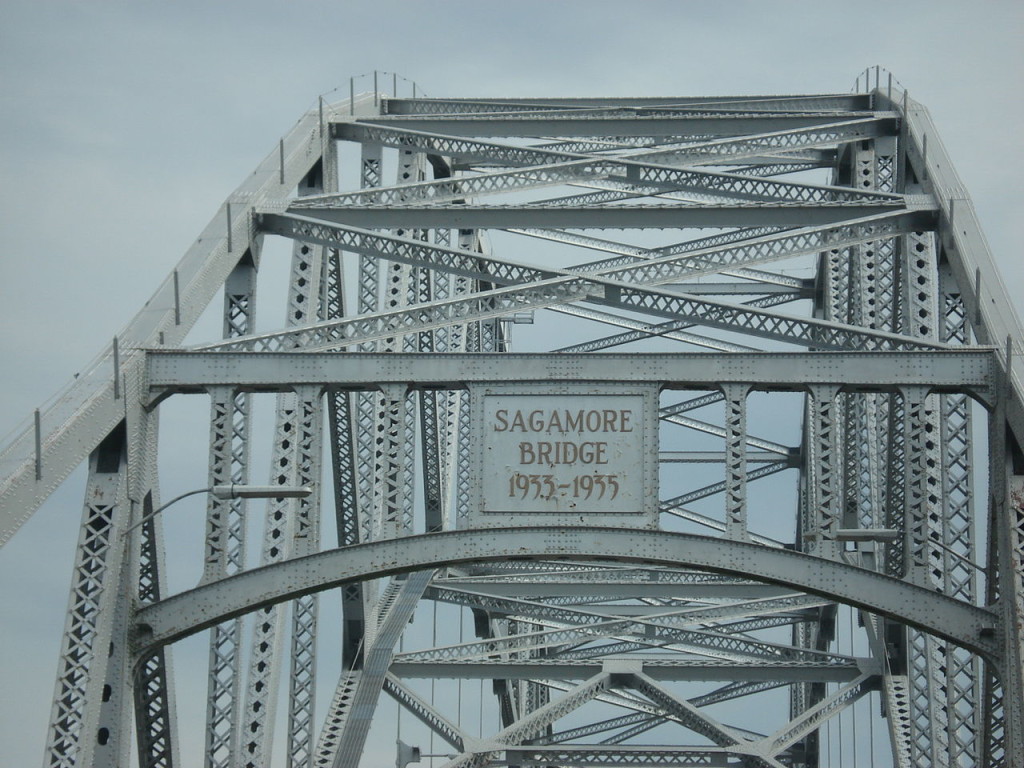One of my pet projects for the past few years has been to find ways to increase the real, teacher-level discourse among educators from the private and public sectors, in all their manifold incarnations. The metaphor I and my colleagues in this endeavor has been that of a bridge—our lip-popping Twitter hashtag, #PubPriBridge, and our related website say it all. Who doesn’t like bridges?
Earlier this week I took my quest over the physical Sagamore Bridge to EdCamp Cape Cod, my second time at this event held at Sandwich High School and organized by a team so efficient that it made my head spin. They had shaken the sponsor money tree so hard that one of the longest sessions was the prize giveaway at the end. And there was even fresh bread left over.
They had shaken the sponsor money tree so hard that one of the longest sessions was the prize giveaway at the end. And there was even fresh bread left over.
My usual session, in the case titled “What Do Private And Public School Educators Have To Say To Each Other?” drew a pretty paltry crowd—four of us in a room, representing (as teachers, former teachers, former students, and parents) every sector from parochial to charter to mainstream public to independent to home-school. The conversation was spirited, and it uncovered something that needed to be uncovered, I guess.
To put it bluntly, Cape Cod is a region of shrinking demographics for school-age children, a significant level of underemployment, and a surfeit of schools. While several public school systems have joined to regionalize, the highest-profile charter school is seeking to open a third campus, and the smallish independent schools are in a justified panic about where their new students might come from. The uppermost tiers of the socioeconomic bleachers even tend to send their kids to boarding school or even to commute—something probably unthinkable before an old rail line reopened as a commuter line—to independent schools in Boston.
Two years ago at EdCamp Cape Cod the grumpy lunchtime banter among the public school teachers was about the big charter, which seemed to be drawing off the best students with its IB program and low cost. This year there was doomsday talk about the independent schools and even some of the smaller public districts. Everyone agreed that the culprit is demographics, and just this afternoon the Boston Globe confirmed this with a chilling feature piece titled, “Why are so many young professionals fleeing the Cape?”
Monday’s conversation at EdCamp, however, took even more turns. Were the charters and some of the private schools trading on a kind of elitism? Was something referred to as “white flight”—something we know way too much about in metro Boston—in play? Were the increasingly diverse immigrant communities scaring families with the savvy to go charter or the funds to pay for private away from the mainstream public schools? Was income inequality driving these trends faster and harder than ever? Yes, yes, yes, and yes, was the consensus, and this among educators who happened to be or to have been stakeholders in every sector. It wasn’t a pretty picture being painted.
For the #PubPriBridge-building idealist in me, this was a sad conversation, as much as I wound up learning. I knew a bit about this all from my previous EdCamp Cape Cod and from living in the region, but the hardest part was witnessing a conversation among educators that never really got to “the good stuff” about education. Wariness and fear of competition leached the teacher-talk right out of the room, even among a tiny handful of people who had come in predisposed to share and learn.
Here’s what I learned, though: I “learned” what as a teacher and a citizen I already knew, that when people and interests are pitted against one another, whether by design or by overwhelming social and economic forces, what suffers is the advancement of education. Teachers, administrators, school boards, parents, and ultimately children who are forced into places of suspicion and fear aren’t going to be doing as much as they could to promote or deliver or support or experience authentic, whole-child, democratic learning.
Short of an economic miracle, not much seems likely to change on the Cape in the next few years, and in the great scale of things I suppose things aren’t as bad as they might be, say, in inner-city Baltimore or Ferguson, Missouri, or in the hundreds of U. S. counties where “rural poverty” dominates the landscape. In all these places, just as on picturesque Olde Cape Cod, the educational conversation is derailed and twisted by economics and ill-considered policies that turn the possibilities of erecting bridges into something more like digging bunkers.
I have no cure, no solution, but if indeed “you learn something new every day,” this part of my learning that day was kind of dreary. It’s a good thing the rest of EdCamp Cape Cod was terrific—including the sponsor-supplied food and refreshments (Coke and Pepsi!)—and I came home as much energized as disheartened.
But as I recrossed the Sagamore Bridge and headed back toward Boston, all I could think of was that the #PubPriBridge is sometimes a lot harder to build than I think it should be, for reasons that don’t have very much to do at all with teaching and learning.
